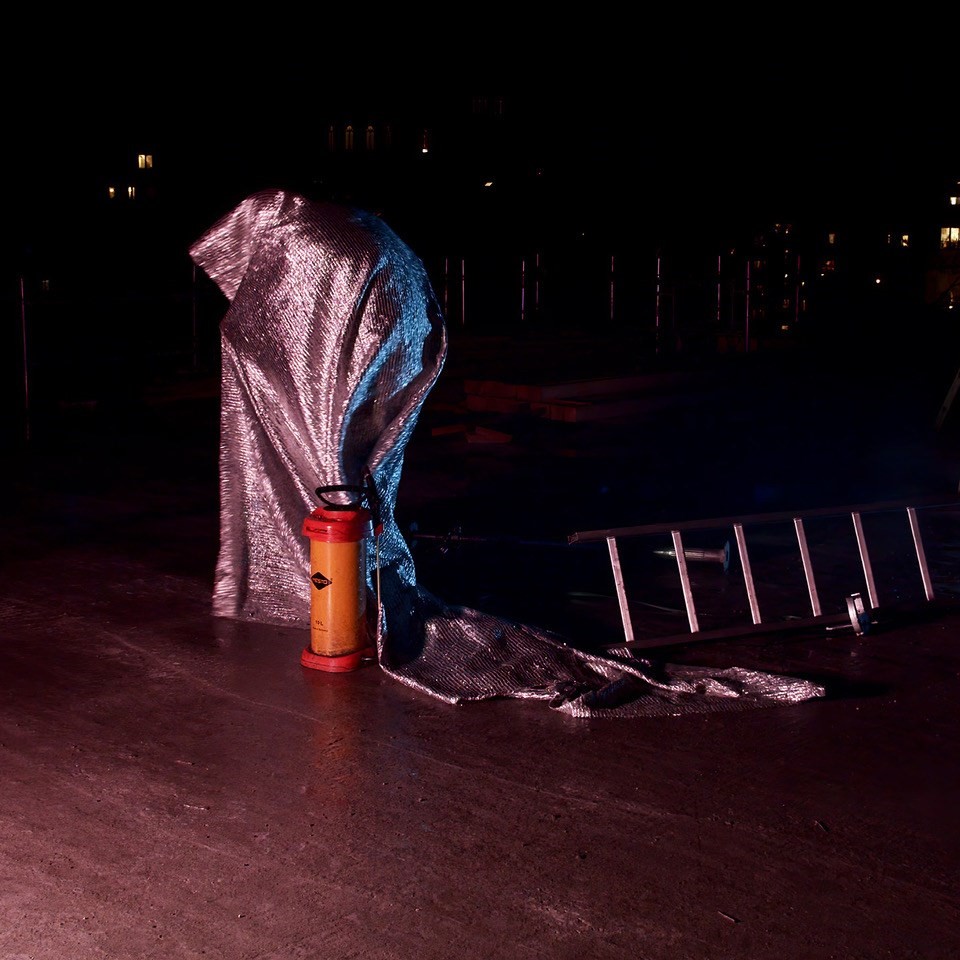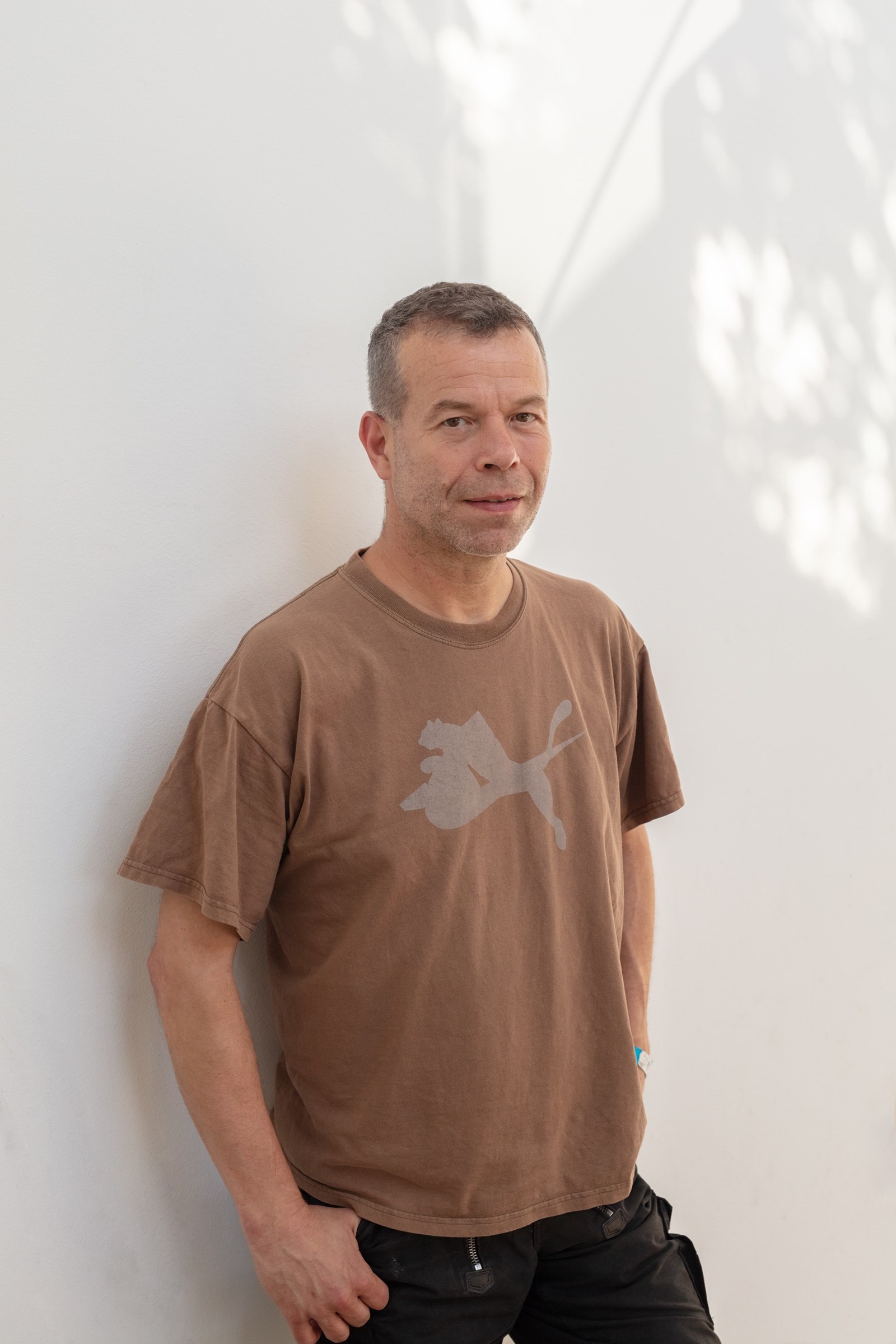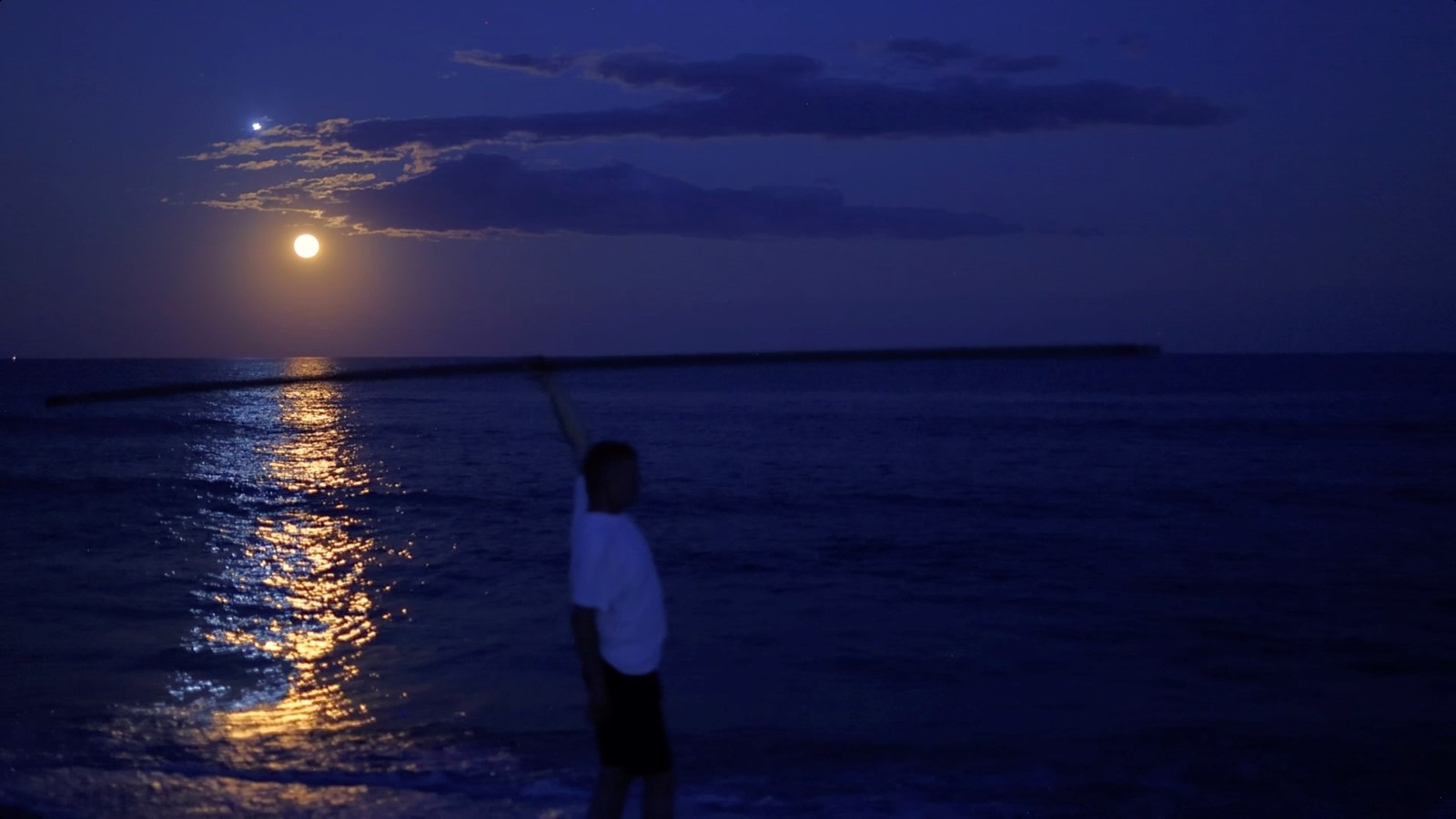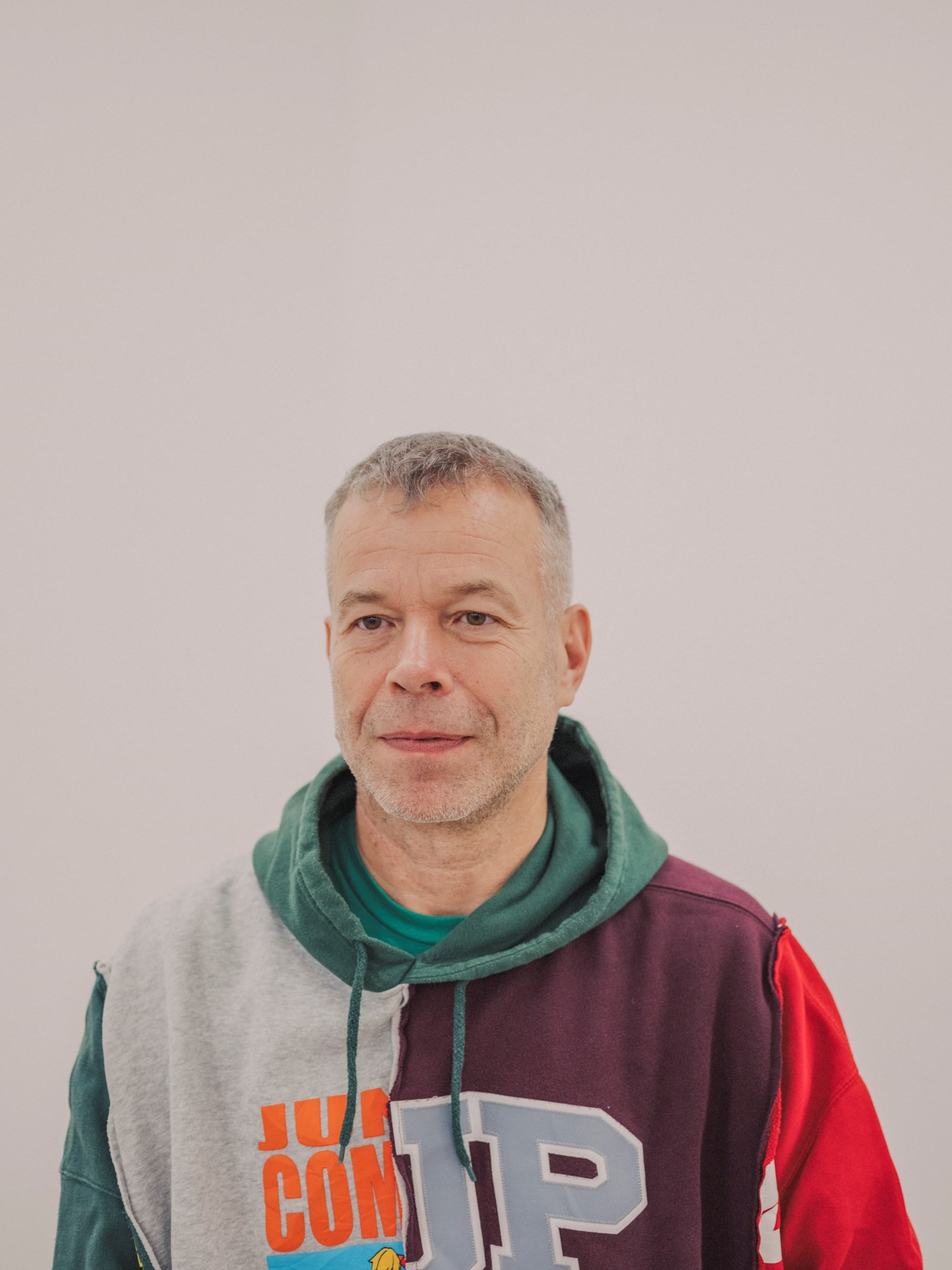Today, Wolfgang Tillmans, one of the world’s leading contemporary artists, releases Build From Here, his second album. While we might be more familiar with his photography, video and printed matter, anyone who listened to Frank Ocean’s visual album Endless in 2016 would have heard Tillmans’s track Device Control in its entirety: Ocean sampled the whole thing as the concluding track on his album. Tillmans’ first EP, released that same year, contained music he had recorded onto cassette tape in 1986.
His longstanding participation in club culture is also evinced in his work, from photographs taken in Berlin’s Berghain (Tillmans is one of very few photographers given permission to document the club), to images of his own studio parties or his portrait of ‘Smokin’ Jo’, who was resident at Trade, the gay night held at Turnmills, London, in the 1990s, and the only female DJ to have won the Number One DJ In The World Award from DJ Mag (in 1992). Build From Here definitely offers music to move to, but it isn’t a dance album. Instead it’s stylistically diverse, shifting through ballads, instrumentals and club rhythms. Across his practice, Tillmans insists on multiplicities – a riposte to fascistic modes of thinking or communicating – and Build From Here is no exception.
In a conversation over Zoom, between London and Tillmans’ studio in Berlin, the artist describes how he has integrated his music into his practice, and how his identity as a musician has taken shape over the last eight years.

Lucy Kumara Moore: It’s been three years since the release of your debut album, Moon in Earthlight. In the interim, you’ve worked on seven solo exhibitions across four continents as well as preparing this new record. Does your music practice run alongside the making and exhibiting of your visual work? Or do you switch between them?
Wolfgang Tillmans: The ideas, the melodies and the lyrics sometimes come completely unannounced. But also, when I feel the urgency to make room in my schedule to meet up and jam with friends, then that also alerts my mind to that side of my brain before a session on either Fire Island, Trixx in Berlin, or with Jay [Pluck] in New York. I feel the want and the need to do it and having it in my diary means that I can’t show up empty-handed.
But there are many ways that the music happens – it doesn’t play second fiddle anymore. In Hong Kong there is currently an exhibition of my work at David Zwirner, where a quarter of the exhibition is a video installation from the new album – it’s an absolutely integral part of the exhibition.When we last spoke about my music, eight years ago, I was still in the early stages, and was reluctant to call it equal [to my other work]. Because it also wasn’t yet.
LKM: Yes, I was fortunate to interview you about your first EP release in 2016, 2016/1986. At that time, you said: “It may all be over in a few months. But … I will see where it takes me.” Can you tell me about the journey music has taken you on?
WT: It’s been an incredible roller coaster. The first year with the Frank Ocean release – having this fledgling project, which at the same time was jolted into the number one Billboard album. And then the Tate Tanks project, which also hadn’t happened yet at the time of our conversation. That was of course a huge step, with Chris Dercon [then director of Tate Modern] giving me carte blanche for ten days. At the beginning of 2016, I was thinking in terms of video and programming other sound, but when I came to Tate to test the sound system, I took my own music with me and Chris said, ‘I think it’s clear you should do something about your own sound.’
And so, this 100-minute installation of sound, lights and video came into being, which really set the tone for what, four years later, would be Moon in Earthlight. This experimental cohabitation of field recordings, spoken word, fully produced studio tracks or jam cuts from just playing together – I felt super excited about this breadth of material. Allowing super rough things to stand next to super refined things is what my exhibitions are also like. There is the fleeting, very carefully arranged moment. And it’s somehow giving everything space and presence. In November 2021 when I released Moon in Earthlight, and also showed it as a film at Regen Projects in Los Angeles, I felt it was the first release that was exactly how I wanted it to sound.
“Suddenly I’m more confident in being a full musician here and not like a conceptual artist assembling sound. It took eight years to get here” – Wolfgang Tillmans

LKM: How did Build From Here come together?
WT: After the first album was released, I was completely absorbed with my MoMA exhibition in New York. This was a lifetime survey exhibition, with all the weight and responsibilities and trauma that comes with it, unfortunately. It was a lucky and happy ending, but the scale of it meant that music took a complete backseat. Last spring, I started to take singing lessons again. I also took an interest in bodywork and breathing, and then last summer, more spontaneously, I reconvened with Jay Pluck and Kyle Combs in New York and Tim Knapp in Berlin.
We were sort of bouncing back and forth and these new songs happened – Where Does The Tune Hide? and We Are Not Going Back. Suddenly I felt a new confidence in really pure musical songs and I thought, OK, let’s work on a new album. Suddenly I’m more confident in being a full musician here and not like a conceptual artist assembling sound. It took eight years to get here.
LKM: Can you talk about the song We Are Not Going Back, one of the singles from the new album, and also its video, which is edited by Michael Amstad and features amateur film footage made by your grandfather Karl R Tillmans, shot in New York in 1939 and Western Germany in 1949?
WT: It is an activist song, in this moment when there are so many people that want to turn back the clock on women’s reproductive rights, for example, or gay liberation. This phrase ‘we are not going back’ is actually the title of a song by British band The Housemartins as well. It has always embodied, for me, that which I am not prepared to give up – the advances, the positive developments in society – to go back to war-mongering or religious governments clipping human rights.
But then I also don’t really want to make a protest song. So, the verses are much more elusive in their lyrics. It’s not saying what I’m against or what I’m for. True to my visual practice, they [the song and video] speak clearly, but they also speak a certain polyphony.

LKM: On the album you’re mostly singing in English, but there are also moments of German and French Lesson is sung in French. What informed these choices of language?
WT: I’m not hyper-talented at language, but there’s something in the connection of words and sound and pronunciation that I like. I guess it’s about looking at words as things with aesthetic qualities.
The final song on the album is called Language. I’m hugely interested in the cognitive dissonance people accept between what people say and what people do. For example, finding what Trump says objectionable, or not to their taste, but still voting for him.
In so many ways, language is used as if it is non-binding. But I feel that it actually is: what we say is what we mean. Ideas aren’t just words, and words are realities. It’s also inspired by my early 2000s interest in the Quakers, who have this insistence on not lying – on truthfulness. With common ground, common language and common trust, living together is a much easier proposition.
LKM: Modernist Survival Unit is another single from the album. What is it about?
WT: It’s kind of a compendium to We Are Not Going Back, which is about the forces that want to undo us – undo liberal society. It’s a playful title because modernism clearly didn’t deliver all the answers. It created just as many problems. Postmodernism didn’t fix them either. But there is still a longing for modernist clarity and the advances of that kind of rational, problem-solving approach that it embodied. But it’s not like modernism will protect us either. The song has very serious considerations and sentiments whilst being nonsense as well.

LKM: How did the image on the cover of the album artwork come into being?
WT: It was an experimental performance on a building site. We used this silvery agricultural fabric from America which I have used in my work since 2016. It’s for areas with intense heat and sun to protect agricultural plants from burning. So, it has this climate-controlling quality and it’s very theatrical and super attractive. I ended up performing in it, without an audience, but with Michael [Amstad] filming me. And then it took three years for the footage to find its match. It wasn’t ever made with a song in mind. This is the way that my production works: sometimes things sit for years unused, and then meet a match in a new format or purpose and iteration.
I’m interested in the work looking simple, not hiding behind high production values that are readable. At best it has this freedom which people feel because it includes them, there’s the sense of ‘I could do that, this could be my set of eyes, I’m included in this perspective’.
LKM: How do you feel about performing and how important is that to you?
WT: I’m incredibly happy that I played live from 2016 to 2019, including at the BOFFO Fire Island Performance Festival. It was a really important formative experience to listen to five other musicians, and to play in tune and in sync with them. But I realised that it takes a lot out of me. That’s why I felt so happy to have arrived at the Moon in Earthlight film installation, which then became part of the MoMa collection in New York. When including my music and videos in exhibitions, they are more integrated into this larger practice that my work has become over the last ten years.
LKM: Finally, where can we buy Build From Here in London?
WT: Phonica or Rough Trade – it has full distribution.
Build From Here by Wolfgang Tillmans is out now.
